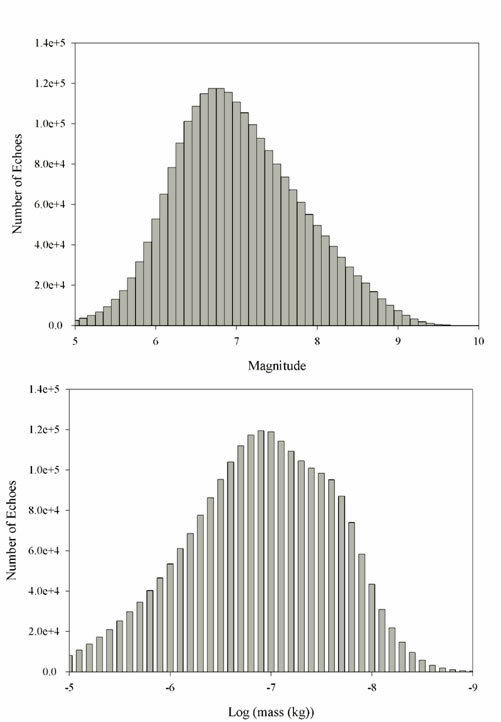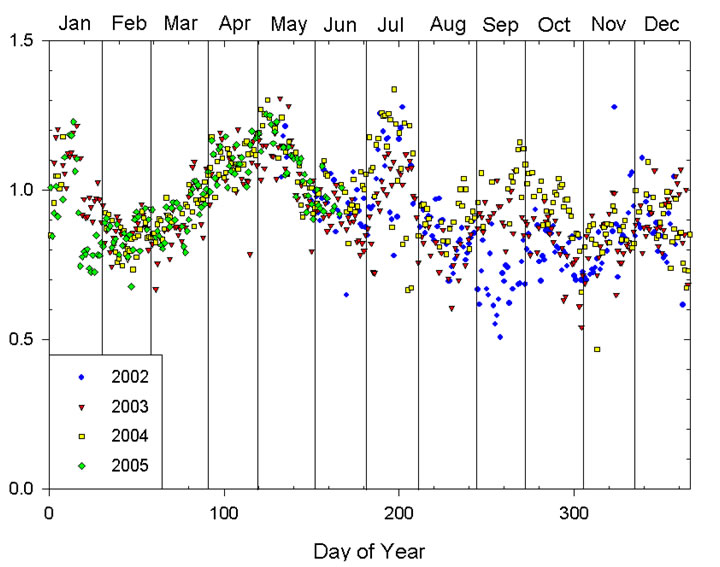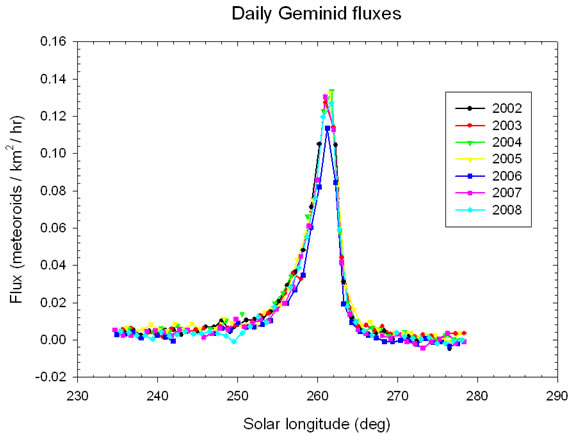Meteor Radar Observations
The Canadian Meteor Orbit Radar (CMOR)
Samples of some results
The results from CMOR include meteoroid orbital distributions, radiant maps, shower and sporadic meteoroid fluxes and mass distirbution indices. The meteoroid mass range for CMOR measured echoes which yield orbits (and equivalent radar magnitudes) is shown below:

Sporadic Meteors
The following map is in sun-centred coordinates showing all meteor radiants recorded by CMOR during its operational history binned at a resolution of two degrees. The major sporadic sources (see here for more background on the nature of sporadic sources) are also marked.

A movie version showing the change in radiant locations and activity throughout the year can be found here.
The variation in the total flux from the sporadic sources shows a similar annual pattern (more here) where the ordinate is in units of meteoroids per km2 per hour to a limiting mass of 1.5x10-7 kg.

Meteor Showers
Individual meteor showers can be studied by CMOR using rate counts from the main station alone, where interferometry is used to distinguish probable shower members from a particular radiant. This radiant mapping technique for single station radar meteor echoes was developed at Western (see details here) and produces daily activity maps which show showers becoming visible and then fading into the background. This movie shows the change in single station radiant activity as seen by the 29 MHz CMOR radar for a "virtual" year by stacking 20 Million total echoes per single degree of solar longitude from the years 1999 - 2005.
Additionally, CMOR single station measurements permit measurement of shower fluxes, such as those of the Geminids shown below.

We have recently completed a large survey using CMOR orbital data together with wavelet-based detection algorithms to find and characterize radar meteor showers. The initial results from this early reconnaisance study are given here.



